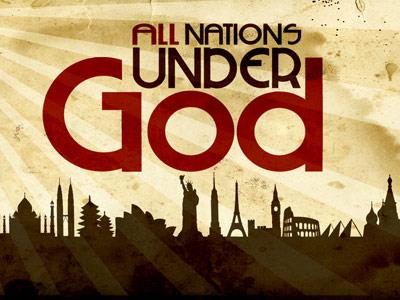-
The Beauty Of The Prayer Shawl (Part 2) Series
Contributed by Amy Bickel on Jun 15, 2007 (message contributor)
Summary: Exploring the Jewish roots of Christianity by studying the symbolism of the prayer shawl.
Last week we started a new sermon series entitled “The Beauty of the Prayer Shawl.” The purpose of this series is to help us understand a little bit more about the Jewish roots of our faith. Jesus told us that “…salvation is of the Jews.” Basically what he means is that there would be no such thing as Christianity if it wasn’t for the Jewish people.
Many of the familiar Bible passages and stories that we have heard repeated over the years contain deeper and fuller meanings when we can understand the Jewish influence and traditions behind them. We are going to take a look at a few of these passages today and more next week.
We began our study of the Jewish prayer shawl or tallit by looking at the different parts of it: the atarah (neckband or crown), the kanaph (corners or wings), and the tzitzit (tassels, or knotted fringe).
We read in the books of Numbers and Deuteronomy where God commanded all the men of Israel to wear the fringes on their garments through all generations. We discussed the missing blue servant strand and the snail who produced the dye for it – how it had disappeared for approximately 2000 years only to reappear today.
This morning we’re going to be taking a closer look at the tzitzit, which are the most important part of the prayer shawl.
To the Jew and to anyone with understanding these knotted tassels reveal God’s name, God’s Word, God’s double-portion power for every believer, God’s power, and His prophecy. We are going to look at the first two of these today (the revelation of God’s name and Word). The other 3 we will look at next week.
I. Hebrew Gematria
Now, you may take a look at the tzitzit and see the knots, the coils, and the strands and wonder how something so unassuming could reveal things so great and important. To understand this you must know a little bit about Hebrew gematria.
The God we serve is a God of words and a God of numbers. When it comes to revealing the deeper more mysterious parts of His nature and will, He often presents this information to His children in the form of numbers instead of words. This is what He did with the tzitzit. He revealed His name and His Word through the use of numbers.
To show you how this works, I must explain to you what gematria is. If you look at your insert you will find a chart entitled Hebrew Alphabet, Transliterations, and Numerical Values. Take a look at it while I try to explain.
In the Hebrew language there are no numerals (symbols that stand for numerical values). Instead each letter of the Hebrew alphabet has a numerical value attached to it. For instance, the first letter, ALEPH, has a numerical value of 1. But the eleventh letter, KAF, has a numerical value of 20, and so on. This gives the Hebrew language a depth that isn’t found in other languages. Each Hebraic word has a literal meaning, but it also has a numerical value, and numbers have great meaning in the Bible. (6 = man, 7= completion or perfection, 8=new beginnings, 40=judgment)
It is the applying of a numerical value to the Hebraic alphabet that is known as gematria or Jewish numerology. To show you how this works I have transliterated my own name into the Hebrew equivalent. Look at Illustration 1. (Available upon request)
I don’t know if there is an special meaning attached to the number 51, but it is a number made up of 50 and 1. 50 in scripture often refers to the Holy Spirit (Pentecost – when the Holy Spirit came to dwell with men occurred 50 days after Jesus’ Resurrection). The number 1 in scripture means unity. Now the literal meaning of “Amy” is “beloved,” and is French in origin. But one could say that the Jewish numerical value of my name means “unity with the Holy Spirit.”
A. The Tzitzit Reveals God’s Name
So, what does all this have to do with the tzitzit and God’s name? In Exodus 6:3 we read: “I appeared unto Abraham, unto Isaac, and unto Jacob, by the name of God Almighty, but by my name JEHOVAH was I not known to them.”
Jehovah in Hebrew is pronounced Yaweh. Spelled YHWH. This is what is known by Jews as the unspeakable name of God. God is called many things and known by many names, but this name is the name that reveals God’s great power. It is the Hebrew composite that means “God who was, God who is, and God who will be forever!”
1. The Coils or Windings
For thousands of years men followed God without knowing or experiencing this part of His character. Abraham, Isaac, and Jacob never did. But God sent incredible miracles to the generation of Israelites that He freed from Egypt. They saw first hand God’s power through the plagues He sent upon Egypt, through the parting of the Red Sea, through the cloud and fire that led them, through the manna that was daily supplied, and through many more miracles. So it was to this generation, through Moses that God commanded His name JEHOVAH be placed in the tzitzit. He put it in the tassels that were to be constantly before their eyes, so they would never forget what He did for them. And His name is found among the coils or windings.

 Sermon Central
Sermon Central


